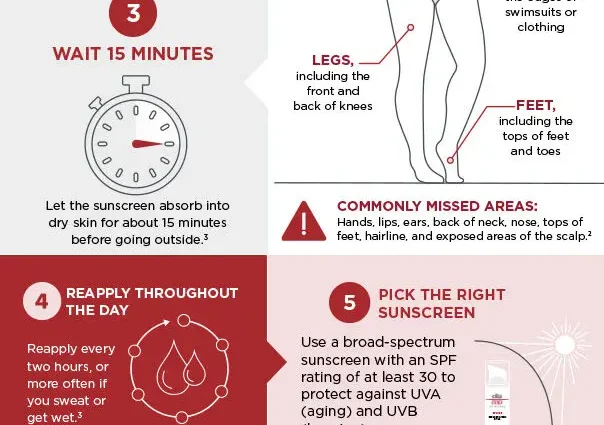Contents
- Why you need a product with SPF protection
- Types of sunscreen
- Top 5 sunscreens
- Sun protection tinting fluid for the face and skin around the eyes Anthelios, SPF 50, La Roche-Posay
- Anthelios XL Mattifying Sun Spray Veil for Face, SPF 50, La Roche-Posay
- Anthelios Sunscreen Invisible Spray for Face and Body, SPF 50, La Roche-Posay
- Anthelios Anti-Aging Sun Cream, SPF 50+, La Roche-Posay
- Anthelios Baby & Children Sun Milk, SPF 50+, La Roche-Posay
A good sun cream (SPF) is always relevant, not only in hot summer. And in the off-season, after cosmetic peeling or laser procedures, and in winter, if you suddenly decide to go on vacation to the sea … We will tell you how to choose the right sunscreen so that you enjoy using them all year round.
Why you need a product with SPF protection
protects the skin from sunburn;
prevents photoaging (which means early wrinkles, age spots and loss of elasticity);
reduces the risk of sun allergies;
protects the skin from ultraviolet radiation after aggressive cosmetic procedures (laser, invasive, etc.);
additionally cares for the skin thanks to active ingredients – it can correct imperfections, moisturize, supply vitamins and antioxidants.
Cream with SPF is necessary, even if you are going to spend the summer not at the sea, but in the city.
Types of sunscreen
What is the protection factor?
The lighter the skin, the less it is protected from the sun’s rays. If the skin never tans, but only burns out (that is, melanin is almost not produced in it), it is better to give preference to creams with maximum protection – SPF 50 and 50+. If the skin is darker, but still sometimes burns in the sun, use products with SPF 30-50. Dark-skinned people and those who rarely burn can use sunscreen with SPF 20. At the same time, in the first days at sea, everyone is recommended to use products with a 50/50+ indicator, regardless of skin type.
Take our quiz to find out if you’re using sunscreen correctly.
What type of skin do you have?
This factor is important. For those with dry skin дepcosmetologist Maria Nevskaya advises choosing products with a maximum protection factor, moisturizing and nourishing ingredients (hyaluronic acid, glycerin, oils, vitamin E and others). Those who have oily skin should look for products that, in addition to sunscreens, will have matting and, if possible, sebum-regulating components.
With physical or chemical filters?
With what composition?
A nice addition to sunscreens are caring components. It is great if the cream contains such substances:
panthenol, which restores the skin and softens it;
antioxidants – resveratrol, vitamins A, C, E and others; they neutralize the action of free radicals, which are produced under the influence of ultraviolet radiation;
hydrants hyaluronic acid, glycerin, aloe vera with moisturizing action.
For what purpose?
In what format?
In any – in the form of a cream, fluid, gel, spray, stick, solar water, etc. It depends on what is more convenient and pleasant for you to use.
The spray is good for refreshing protection at the beach and when traveling.
The stick is suitable for local areas – face, ears. It is convenient to carry it in your bag, in your pocket.
Solar water can be used for sun protection in the city.
By the way, our test will help you choose the texture.
Top 5 sunscreens
And now – a review of sunscreens, sprays and emulsions that Healthy-Food recommends. On the one hand, they provide a high level of UV protection, and on the other hand, they can be used both at sea and in the city, and as a prevention of pigmentation after salon procedures.
Sun protection tinting fluid for the face and skin around the eyes Anthelios, SPF 50, La Roche-Posay
Light and weightless, it is almost not felt on the skin. But it protects it very reliably thanks to a combination of photostable filters reinforced with antioxidants.
Anthelios XL Mattifying Sun Spray Veil for Face, SPF 50, La Roche-Posay
Thanks to its mattifying ingredients (silicon dioxide and perlite), it does not leave a greasy sheen at all and is ideal as a make-up base. It also provides excellent UV protection.
Anthelios Sunscreen Invisible Spray for Face and Body, SPF 50, La Roche-Posay
An indispensable thing in a seaside resort. Easy to apply, resistant to water and sand. And thanks to the complex of sunscreens and antioxidants in the composition, it protects the skin from excessive insolation.
Anthelios Anti-Aging Sun Cream, SPF 50+, La Roche-Posay
Due to the high level of SPF and caring components in the composition (low molecular weight hyaluronic acid, Phe-resorcinol and niacinamide), it perfectly protects against wrinkles and other signs of aging, including those caused by UV exposure.
Anthelios Baby & Children Sun Milk, SPF 50+, La Roche-Posay
Soft and velvety texture, powerful but safe sunscreens, caring ingredients (thermal water and shea butter) in a balanced composition – all this allows you to use milk from 6 months of age.










